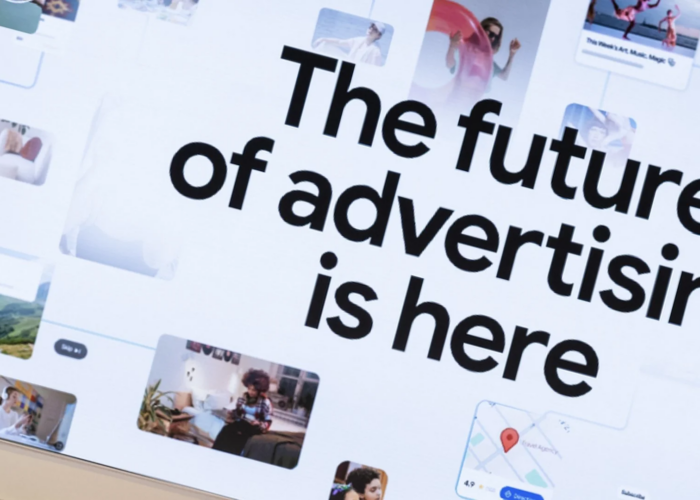Paid search advertising has remained a cornerstone strategy for brands looking to capture intent-driven traffic and convert users into loyal customers, but the game is changing. Rapid advancements in artificial intelligence (AI) are not just enhancing how advertisers create and optimize their campaigns — they are fundamentally rewriting the rules of engagement. As we enter a new year, AI’s influence on paid search is ushering in a new era of precision, automation, and intelligence, enabling marketers to achieve levels of efficiency and personalization that were once unimaginable. The days of manual keyword research and static ad targeting are giving way to dynamic systems capable of interpreting user behavior in real-time, delivering hyper-relevant messages across diverse channels, and predicting campaign outcomes with unprecedented accuracy. This shift is not merely incremental; it’s transformational, reshaping how brands connect with audiences and how consumers experience digital advertising. Yet, as the promise of AI unfolds, it also brings with it a set of challenges—questions of ethical usage, data privacy, and the delicate balance between automation and human creativity. It’s essential for marketers to understand these developments to effectively navigate the evolving digital advertising ecosystem.
1. The Rise of AI-Driven Campaigns
Artificial intelligence is set to revolutionize paid search advertising by automating and optimizing various aspects of campaign management. AI algorithms can analyze vast datasets to identify patterns and predict outcomes, enabling more efficient bidding strategies, ad placements, and audience targeting. Google’s Performance Max campaigns exemplify this trend, allowing advertisers to access all Google Ads inventory from a single campaign. These campaigns utilize AI to determine the optimal ad placements across Search, Display, YouTube, and Discover feeds, streamlining the advertising process and enhancing performance. However, the increasing reliance on AI also raises concerns about transparency and control. Advertisers may find it challenging to understand the rationale behind AI-driven decisions, making it crucial to maintain a balance between automation and human oversight.
2. Shifting Consumer Search Behaviors
Consumer search behaviors are evolving, influenced by the proliferation of AI technologies and changing preferences for information consumption. Platforms like TikTok and AI-powered search engines such as Perplexity are gaining traction, particularly among younger demographics, as alternatives to traditional search engines like Google. This shift necessitates that advertisers diversify their paid search strategies to include emerging platforms. By understanding the unique user behaviors and preferences on these platforms, marketers can create tailored ad experiences that resonate with their target audiences.
3. The Emergence of New Advertising Models
The digital advertising landscape is becoming increasingly competitive, with new players introducing innovative advertising models. For instance, AI-powered search engines like Perplexity are exploring partnerships with top brands to launch advertising models that feature sponsored questions with AI-generated answers approved by advertisers. These developments indicate a shift towards more integrated and conversational advertising experiences, where ads are seamlessly embedded within AI-generated content. Advertisers will need to adapt by creating more engaging and contextually relevant ad content that aligns with the conversational nature of these platforms.
4. The Decline of Traditional Search Engine Dominance
Traditional search engines like Google are experiencing a decline in dominance, with their share of the U.S. search ad market expected to drop below 50% for the first time in over a decade. Competitors such as Amazon and TikTok are capturing significant portions of search ad spending, driven by their ability to offer more efficient e-commerce experiences and targeted ad products. This trend underscores the importance for advertisers to expand their paid search efforts beyond traditional search engines. By leveraging the advertising capabilities of platforms like Amazon and TikTok, marketers can reach consumers more effectively at various stages of the purchasing journey.
5. The Integration of AI in Search Results
The integration of AI into search results is transforming how information is presented to users. Google, for example, is testing AI-generated overviews and more personalized results, aiming to enhance user experience by organizing content and providing comprehensive digests of information. For advertisers, this means that traditional ad placements may evolve, requiring a deeper understanding of AI-driven search result formats. Creating content that aligns with AI-generated summaries and ensuring that ads are contextually relevant will be key to maintaining visibility in this new search environment.
Challenges of AI in Paid Search Advertising
While AI offers numerous advantages, it also presents certain challenges that advertisers must navigate carefully.
-
- Transparency and Control: One of the primary concerns with AI-driven campaigns is the lack of transparency. Many AI systems operate as “black boxes,” making it difficult for advertisers to understand how decisions are made. This lack of clarity can lead to hesitation in fully trusting AI systems.
- Data Privacy: As AI relies on vast amounts of user data to function effectively, ensuring compliance with privacy regulations such as GDPR and CCPA is paramount. Advertisers must be diligent in their data collection and usage practices to maintain consumer trust.
- Over-Reliance on Automation: While AI can automate many aspects of paid search, over-reliance on automation can lead to missed opportunities for creative innovation and human oversight. Striking a balance between automation and manual intervention is essential to achieving optimal results.
AI and the Search Engine Results Page (SERP)
-
- AI is transforming the search engine results page itself, fundamentally altering the user experience and the placement of paid ads. Google’s integration of AI-generated overviews and snippets into its SERPs is a prime example. These AI-powered features summarize information from multiple sources, offering users quick, digestible answers to their queries.
- While this enhances the user experience, it also creates new challenges for advertisers. Traditional ad placements may no longer be as visible, requiring brands to adapt their strategies to ensure they appear within or adjacent to AI-generated content. Additionally, advertisers may need to rethink how they present information to align with AI-organized content structures.
The Future of AI in Paid Search Advertising
-
- Looking ahead, AI is poised to play an even greater role in shaping the future of paid search advertising. Advances in AI models, such as OpenAI’s GPT series or Google’s Bard, will likely lead to more sophisticated ad personalization, predictive analytics, and conversational interfaces.
- Moreover, the integration of AI into emerging platforms like the metaverse and augmented reality (AR) environments could open up entirely new avenues for paid search. Imagine users conducting searches within a virtual environment, with AI serving up highly immersive, contextually relevant ads.
- For advertisers, staying ahead of the curve will require continuous investment in AI-powered tools, a willingness to experiment with new technologies, and a commitment to understanding the ethical implications of AI usage. By embracing AI thoughtfully and strategically, brands can position themselves as leaders in the ever-evolving world of paid search advertising.
6. The Importance of First-Party Data
With increasing privacy regulations and the phasing out of third-party cookies, first-party data has become invaluable for advertisers. Collecting and leveraging data directly from consumers allows for more personalized and effective ad targeting, fostering stronger customer relationships and improving campaign performance. Advertisers should invest in strategies to gather first-party data, such as loyalty programs, newsletters, and direct customer interactions, to enhance their paid search efforts. Utilizing this data responsibly and transparently will be crucial in building trust and complying with evolving privacy standards.
7. The Evolution of Ad Formats
Ad formats are evolving to become more interactive and engaging, catering to the preferences of modern consumers. Features like shoppable ads, video content, and immersive experiences are becoming standard, requiring advertisers to innovate in their creative approaches. Staying abreast of emerging ad formats and experimenting with interactive elements can help advertisers capture attention and drive higher engagement rates. Collaborating with creative professionals and utilizing AI tools for content generation can facilitate the development of compelling ad experiences.
8. The Role of Voice Search
The increasing adoption of voice-activated devices has led to a rise in voice search queries. This trend necessitates that advertisers optimize their content and ad strategies for voice search, focusing on natural language and conversational keywords. Understanding the nuances of voice search behavior and tailoring ad copy to match the conversational tone of voice queries can enhance visibility and relevance in voice search results. Additionally, ensuring that websites are mobile-friendly and load quickly will improve user experience for voice search users.
9. The Impact of Visual Search
Visual search technology allows users to search using images rather than text, offering a more intuitive way to find products and information. Platforms like Pinterest and Google Lens are at the forefront of this technology, enabling users to discover visually similar items and related content. Advertisers can capitalize on visual search by optimizing their image assets with descriptive metadata and high-quality visuals. Incorporating visual search optimization into paid search strategies can enhance discoverability and drive traffic from users seeking visually related products or information.
10. The Necessity for Cross-Platform Strategies
The fragmentation of digital platforms means that consumers interact with multiple channels throughout their purchasing journey. Developing cross-platform paid search strategies ensures consistent messaging and a cohesive brand experience across various touchpoints.
AI is no longer just a tool for automating processes — it is a driving force reshaping the entire paid search ecosystem. From optimizing campaigns to redefining ad formats and search interfaces, the influence of AI is both profound and inevitable. For marketers, the key to success lies in harnessing the power of AI while maintaining a human touch, ensuring that campaigns remain creative, ethical, and customer-focused.
As we look to the future of paid search advertising, one thing is clear: artificial intelligence is no longer just a peripheral tool — it is at the heart of the industry’s transformation. From optimizing campaigns to redefining user interactions and search engine results, AI is shaping every aspect of how advertisers connect with consumers. It’s not simply about automating repetitive tasks anymore; it’s about enabling innovation, unlocking new possibilities, and pushing the boundaries of what digital advertising can achieve.
For advertisers, the rise of AI presents an unprecedented opportunity to stay ahead of the curve, but it also requires a fundamental shift in how campaigns are planned, executed, and evaluated. AI’s ability to analyze vast datasets, predict user behavior, and personalize ad experiences is unparalleled, but its success depends on how effectively marketers adapt to these capabilities. Campaigns that thrive in this new era will be those that balance automation with creativity, leverage data responsibly, and focus on delivering authentic, engaging, and contextually relevant experiences to consumers.
However, this shift comes with challenges. Transparency, data privacy, and ethical AI usage are more critical than ever. Marketers must embrace the promise of AI while staying vigilant about its limitations. Understanding the “why” behind AI-driven decisions, adhering to evolving privacy regulations, and maintaining a human-centered approach are non-negotiable. The trust of consumers is hard-won but easily lost, and navigating this dynamic landscape responsibly will separate industry leaders from the rest.



